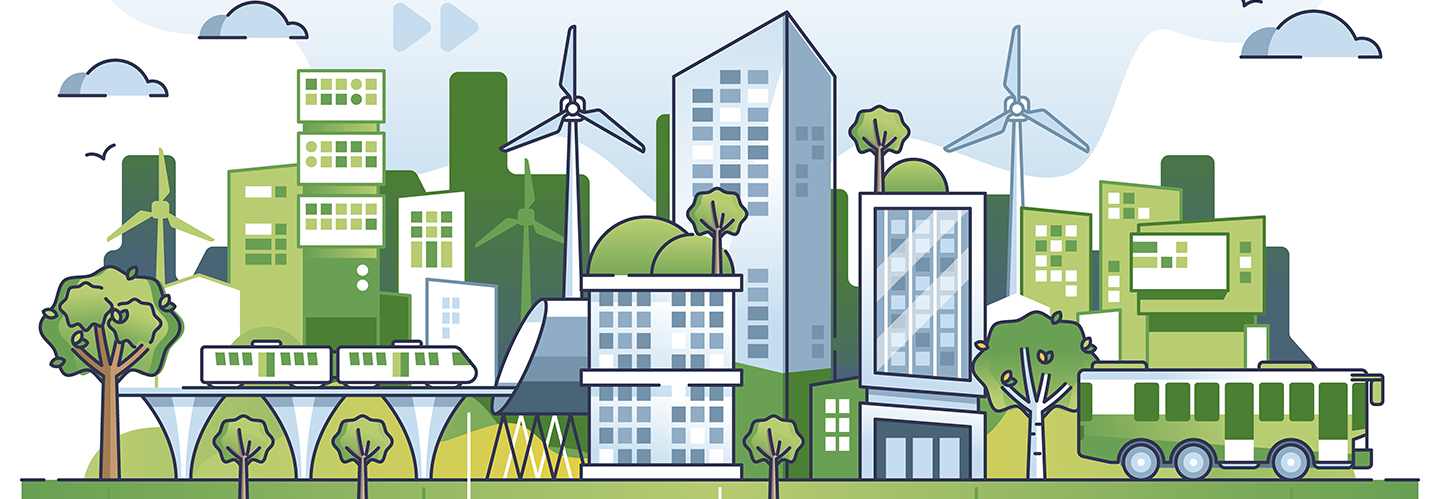Washington (GGM) Analysis | December 23, 2023 by Noreen Wise, Founder & CEO of Gallant Gold Media; Image Credit: AdobeStock
Do daily food choices impact global warming?
The short answer is… Yes! A very significant impact. Can this be reversed? Yes, much the same way that the dirty fossil fuels negative impact is being slashed by the clean energy transition.
According to Ember, an independent analysis firm that relies on “data-driven insights” to assess where countries stand in their transition to clean energy from fossil fuels, “half of the world is past a peak in fossil power,” and 78 of these economies “have displaced fossil power with clean energy.”
Across the globe, fossil fuel use, peaks and rates of decline are being monitored daily. In the United States, the increasing rise in clean energy projects is celebrated by communities and their leaders. “Massachusetts, Connecticut and Rhode Island will procure future wind energy projects together rather than separately as part of a joint agreement the states’ governors announced Wednesday — the first such multi-state agreement in the nation,” the AP reported on October 4, 2023. A quick Google search will show headline after headline of similar good news. “Coal-fired electricity is falling below solar in NC — but there’s more to the trend,” WFAE, Climate News, “Charlotte’s NPR News Source,” reported on July 21, 2023.
With so much focus, planning, funding, monitoring, and celebrating now being applied to the transition to clean energy, we can safely say that we’ve got this. Our cities are on the clean energy track, and the train isn’t going to stop until we’ve reached our destination of net zero emissios in energy production.
So, what’s next?

SOIL HEALTH, REGEN AG & OUR FOOD SYSTEM:
Does Cow Grazing Boost Carbon Drawdown? | Regen Ag
Is There a CSA Near You? | One Acre Farm
Let’s Fix Our Soil So It Can Store More Carbon
Our food system is what’s next! Our food system has become the new top priority that requires the same focus, planning, funding, monitoring and celebrating that switching to clean energy has received.
Every individual can make a difference. Our daily food choices have immediate positive and/or negative cascading impacts on the environment, on greenhouse gas levels, carbon drawdown, water, and our personal health. In fact, soil food and water quality, and human health are closely related, explains regenerative agriculture pioneer and change maker Gabe Brown through his tireless interviews, never ending public speaking engagements, webinars with Understanding Ag, appearances in documentary films, answering questions during a Congressional Hearing, and even spending time with people like me discussing regenerative agriculture. Brown is also a soil health expert and author of Dirt to Soil, Our Families Journey into Regenerative Agriculture. He’s deemed one of the top 25 most influential leaders in US agriculture.
According to Statista, based on 2022 data, the United States has 893.4 million acres of farmland. This is a land mass so large that it’s the size of Alaska, Texas, California, Montana, New Mexico, and Ohio combined. Unfortunately, a large percent of this farmland has degraded soil, a result of conventional farming practices that rely heavily on high inputs (pesticides, herbicides, and fungicides), monoculture crops, and tilling, which results in the nutrient density of the crops grown on conventional farmland being significantly reduced. A 2021 article in Yale’s Environment 360 warned that more than one-third of the US Corn Belt’s farmland, which is more than 100 million acres, is completely eroded and has lost the carbon in its topsoil.
Additionally, much of the US food supply is covered in a toxic residue that negatively affects our personal well-being. In February 2019, CNN reported that “Glyphosate, an herbicide that remains the world’s most ubiquitous weed killer, raises the cancer risk of those exposed to it by 41%.” As dangerous as conventional farming practices are to human health, with a direct correlation of pesticides/herbicides/fungicides being consumed by those who eat these products being linked to cancer, there is also a cascading negative indirect impact that further undermines human health. Reduced carbon drawdown in degraded soil exacerbates the climate crisis, resulting in a further rise in global temperatures. Oliver Milman reported in August 2023 for The Guardian that heat is the “silent killer“, and in the US, heat is the leading cause of weather-related deaths, surpassing those associated with hurricanes and tornadoes.

Gabe Brown brightened my spirits when he shared the good news (when speaking with him in June 2023) that there are now 30 million plus acres of regenerative farms and ranches and this number is growing, which means improved soil health on all these acres. Healthy soil can drawdown a significant amount of CO2, much easier and more economically than any innovative, high tech climate capture contraption. Healthy soil also improves water infiltration rates, which in turn replenishes the water tables deep beneath the surface. This is an example of a cascading positive impact. Further, our US soil, theoretically, could immediately end the climate crisis if we were able to instantly put back all the carbon that’s been removed since the colonization of North America.
With this in mind, it’s clear that a major pathway to slowing down global warming is restoring soil health. Thankfully, soil health experts, which include numerous farmers and ranchers like Gabe Brown, have been working passionately on this for decades. They’ve spent endless hours researching and testing methods of improving soil health and monitoring the carbon cycle. They’ve proven that the age-old regenerative agriculture principles, and the varying practices related to the varying contexts, work.
Regenerative agriculture is now a global movement committed to transforming farmland and landscapes across the US, as well as the rest of the world, from high input conventional ag to low-to-no-input regenerative ag, resulting in not only a Regenerative Revolution, as Josh Tickell referred to it on a Farm Green podcast, but also a Health Revolution.
Josh Tickell is one of the Producers and the Director of two Regen Ag documentaries: Kiss the Ground and Common Ground.
Kiss the Ground, released in September 2020, is a soil health documentary that explores the remarkable soil health restoration process and provides the 101 on regenerative agriculture. Kiss the Ground is streaming on every platform.
Common Ground is the sequel to Kiss the Ground, and was released on September 27, 2023. It’s being shown in theaters across the country through the end of 2023 and early 2024, and is expected to land on streaming platforms alongside Kiss the Ground sometime in 2024.
The most exciting recent news about the Regenerative Revolution is that the USDA has approved the Regenifiedproduct label that will soon bring these healthy, wholesome, carbon-reducing products to Whole Foods and various other super markets.
Regenified was founded by Gabe Brown and Dr. Allen Williams, who are both on the Board of Directors. The Understanding Ag website notes that Williams is a 6th generation family farmer, and a pioneer “of the early regenerative grazing protocols and forage finishing techniques” with a PhD in Livestock Genetics from LSU.

Regenified’s CEO Salar Shemirani was a recent guest on the Rick Clark Farm Green podcast where he explained to listeners that “Regenified is a land verification certification company for regenerative practices, and ultimately a product certification that helps the ingredients that come from these lands and farms be recognized and to be labeled and marketed as regenerative products.”
“Our entire aim is to bring recognition and reward to farmers and ranchers that practice regeneratively over time.” —Salar Shemirani, Regenified CEO, Farm Green Podcast with Host Rick Clark, 29 August 2023
Regenified’s complex metric is built on the 6-3-4 verification standard: the 6 Principles of Regenerative Agriculture, plus the 3 Rules of Adaptive Stewardship, that drive the 4 Ecosystem Processes.
Doug Peterson, Regenified’s Director of Standards & Protocols, is Regenified’s Chief Scientist. Peterson’s 32 year career as a Soil Health Specialist with USDA-NRCS, included such roles as Regional Soil Health Specialist (Midwest, US), State Soil Health Specialist (Missouri), State Grassland Conservationist (Missouri), and District Conservationist (Missouri). In Peterson’s bio on the Soil Health Academy website he explains, “Learning to work with natural ecosystems and not against them is, without a doubt, one of the biggest challenges.” He goes on to state, “I believe the best learning comes from doing. Growing up on a farms and then spending many years with the NRCS, evaluating farms and ranches across the Midwest, has allowed me to learn a tremendous amount about managing the land.”

6 Principles of Regenerative Agriculture
- No till
- Diverse cover crops
- Little-to-no chemical inputs (pesticides, herbicides, fungicides)
- Live roots in the ground for as long as possible
- Cattle grazing and manure
- Context
3 Rules of Adaptive Stewardship
- Rule of Compounding
- Rule of Diversity
- Rule of Disruption
4 Ecosystem Processes
- Energy Cycle
- Nutrient Cycle
- Water Cycle
- Community Dynamics
Listening to numerous regenerative agriculture webinars and podcast, one quickly learns that regenerative agriculture is a long gradient with all regenerative farmers and ranchers falling somewhere along the wide range. The goal is to keep moving toward 100%. Shemirani explained on the Farm Green podcast that in order to become certified Regenified, once a farm or ranch reaches 20%, a significant milestone, it then has three years to increase another 20%, and three more to reach the next 20%, onward and upward to 100%.
Shemirani outlined the 5 Regenified tiers:
- Tier 1: 0-20%
- Tier 2: 20-40%
- Tier 3: 40-60%
- Tier 4: 60-80%
- Tier 5: 80-100%
According to Shemirani, it’s at Tier 2 that products can receive the Regenefied certification. This certification is live as long as the farm/ranch keeps increasing 20% every three years.
Shemirani emphasized, “We don’t have a checklist, we have a comprehensive evaluation criteria that measures practices and outcomes and essentially placing into a paradigm of how far you are in that regenerative path. And bring that transparency and trust and highlight to the farmer so the consumers know where their products come from. And the commitment that that farmer is making to expand and increase, it helps more regenerative practices over time.”
The Regenified “mark of confidence” products are many: fruits, vegetables, grains, meats, dairy products, eggs, honey, chickpeas, lentils, coffee, flax, garlic, onions, soybeans, hemp and more. The list will keep growing as more and more farmers and ranchers become Regenified certified.
Because corporate greenwashing is rampant, especially in the US, consumer trust is of the utmost importance to Regenified. Shemirani took time during the Farm Green podcast to underscore this priority, “It is important for brands to recognize that consumers do care about authenticity, traceability, and transparency. They care about trusting that if a brand, or an outlet makes certain claims, or discloses some information about the product that the consumer is purchasing, that those claims or [that] information is accurate. And in order to do that, they may have to rely on services of certification, and again certifications that can provide that transparency, traceability and confidence, to be able to have the trust of consumers.”

So, the next time you’re in Whole Foods, be sure to look for the Regenified label. If you don’t see any products, stop at Customer Service and ask. Remember, choosing Regenified instead of conventional is a daily decision that has significant long term positive outcomes for both personal and planetary health.
The Following farms and ranches have already been Regenified certified:
- Browns Ranch | Bismarck, ND
- Carman Ranch | Wallowa, OR
- Union Grove Farm | Chapel Hill, NC
- Harborview Farm | Rock Hall, MD
- Cedar Meadows | Holtwood, PA
- Bella Vista Farm | Sacatepéquez, Guatemala
- Lotus Flower Farm | Galien, MI
- New Family Farms | Holton, KS
- Axten Farms | Minton, SK

© Copyright 2023. ALL Rights Reserved.













































